IPE/BC is an independent, non-partisan organization, however we recognize that IPE/BC Fellows and guest authors hold a range of views and interests relative to public schools, education issues, and the political landscape in BC. Perspectives is an opportunity for Fellows and others to share their ideas in short, accessible essays.
The Role of School Police Liaison Officers: Do We Really Need Them?
Sharon O’Dornan
December 11, 2024
Education Minister Lisa Beare has threatened to fire the elected school board of Greater Victoria (SD 61) if they do not provide a revised “safety plan.” It appears that the safety plan must include the reintroduction of the School Police Liaison Officers (SPLO) program.
 In schools, staff work diligently to ensure that programs are effective. Measurable goals are created, data is gathered, and results are reviewed regularly. Reports regarding student progress are generated at prescribed intervals. These reports are shared with parents and relevant school staff, covering everything from classroom achievements to individualized programs such as speech-language therapy. The information is securely, confidentially stored for future reference as needed. The rationale behind this process is clear: if we do not measure our efforts, we cannot determine whether our interventions are truly making a difference.
In schools, staff work diligently to ensure that programs are effective. Measurable goals are created, data is gathered, and results are reviewed regularly. Reports regarding student progress are generated at prescribed intervals. These reports are shared with parents and relevant school staff, covering everything from classroom achievements to individualized programs such as speech-language therapy. The information is securely, confidentially stored for future reference as needed. The rationale behind this process is clear: if we do not measure our efforts, we cannot determine whether our interventions are truly making a difference.
However, school board chair Nicole Duncan stated (in an interview with Gregor Craigie on On The Island CBC radio, December 10, 2024) that she has received no response to her requests for data and reports regarding the Greater Victoria Police Department’s previous involvement in the SPLO program. Police Chief Del Manak has provided occasional anecdotes about the program, but that is far from the comprehensive data needed to assess its overall effectiveness.
 Schools operate with a great deal of transparency. Classroom teachers provide daily plans that are utilized by themselves or a teacher-on-call. Support staff, such as English Language Learning teachers and contracted specialists like occupational therapists, follow universal referral systems, administer standardized assessments, document observations and provide reports . Caseload information is readily available to school administrators, and priorities are confidentially discussed during school-based team meetings.
Schools operate with a great deal of transparency. Classroom teachers provide daily plans that are utilized by themselves or a teacher-on-call. Support staff, such as English Language Learning teachers and contracted specialists like occupational therapists, follow universal referral systems, administer standardized assessments, document observations and provide reports . Caseload information is readily available to school administrators, and priorities are confidentially discussed during school-based team meetings.
Before I retired from my role as an itinerant speech-language pathologist in SD 61, I found it difficult to understand the role of the SPLO. The transparency regarding their schedules and duties was lacking. If I wasn’t clear about why a police officer was standing in the office or walking in the halls, I can only imagine how unclear the students might have been. This lack of clarity raises important questions about whether the program could be contributing to profiling. It feels strange to have a police presence in a public institution without a specific, stated requirement for their involvement. Why, as a society, do we believe that groups of children require a police presence to be safe, especially when there is no concrete data to demonstrate that this approach actually ensures their safety?
 As schools work hard to maintain a safe and supportive environment for students, the question remains: Does the presence of School Police Liaison Officers truly contribute to the safety of our schools, or is it simply an unproven assumption? Without clear data and transparent reporting on the program’s effectiveness, it’s difficult to justify its widespread adoption. Perhaps it’s time for a deeper, more data-driven conversation about how best to ensure the safety and well-being of students without relying on programs that lack measurable evidence of success. It’s crucial that we continue to explore alternative solutions that prioritize student welfare while addressing the complexities of modern school safety.
As schools work hard to maintain a safe and supportive environment for students, the question remains: Does the presence of School Police Liaison Officers truly contribute to the safety of our schools, or is it simply an unproven assumption? Without clear data and transparent reporting on the program’s effectiveness, it’s difficult to justify its widespread adoption. Perhaps it’s time for a deeper, more data-driven conversation about how best to ensure the safety and well-being of students without relying on programs that lack measurable evidence of success. It’s crucial that we continue to explore alternative solutions that prioritize student welfare while addressing the complexities of modern school safety.
Sharon O’Dornan retired from the Greater Victoria school district (SD61) in 2020, after a 34-year career as a speech language pathologist. During that time, she worked in the Vancouver, North Vancouver and Victoria school districts.
For further reading on this important and topical issue, see:
What is the alternative to police in schools?
“Relationship Building” and the Normalization of Police in Schools
Victoria School Board says lack of communication upended safety plan
Not everyone is welcoming police officers back to schools
Five reasons why school policy officers may not be the most effective way to prevent violence
Vancouver votes to reinstate the SLO program
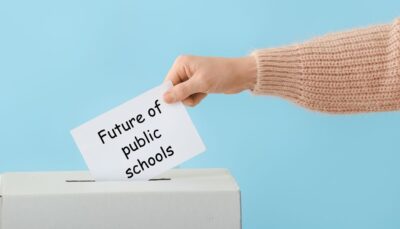 election issue, this particular race was dominated by harmful and hateful rhetoric that sought to control and further privatize education. This included:
election issue, this particular race was dominated by harmful and hateful rhetoric that sought to control and further privatize education. This included: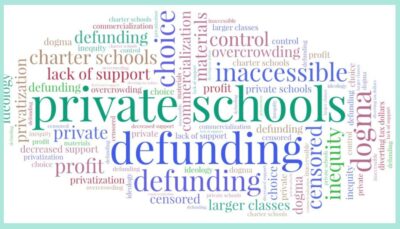 support for the Conservatives in many parts of the province. Their ideas for education are reflected in the ongoing advocacy of right-wing Think Tanks, such as the Fraser Institute, that champion education reforms “to achieve better value for money and improved results for both students and taxpayers.”
support for the Conservatives in many parts of the province. Their ideas for education are reflected in the ongoing advocacy of right-wing Think Tanks, such as the Fraser Institute, that champion education reforms “to achieve better value for money and improved results for both students and taxpayers.” As illustrated in the case of the BC election, these conservative political parties are linked to the rise of the “parental rights” movement in Canada – a movement that embodies the many links between far-right ideologies and interest in education privatization. In BC, for example, the attacks have been focused on a program called SOGI 123, which supports teachers to make schools safer and more inclusive for students of all sexual orientations and gender identities. Contrary to the arguments of the new Rights, research illustrates the positive impact of this program. A recent evaluation of SOGI 123, done by researchers at the University of British Columbia, found that the program decreased bullying and sexual orientation discrimination for both LGBT+ and also for heterosexual students.
As illustrated in the case of the BC election, these conservative political parties are linked to the rise of the “parental rights” movement in Canada – a movement that embodies the many links between far-right ideologies and interest in education privatization. In BC, for example, the attacks have been focused on a program called SOGI 123, which supports teachers to make schools safer and more inclusive for students of all sexual orientations and gender identities. Contrary to the arguments of the new Rights, research illustrates the positive impact of this program. A recent evaluation of SOGI 123, done by researchers at the University of British Columbia, found that the program decreased bullying and sexual orientation discrimination for both LGBT+ and also for heterosexual students. Here’s an idea: Let’s use unpaid labour in the form of captive public-school kids and their overworked, underpaid teachers, and heck, we can even make them compete for the privilege!
Here’s an idea: Let’s use unpaid labour in the form of captive public-school kids and their overworked, underpaid teachers, and heck, we can even make them compete for the privilege!
 As a former Vancouver school trustee and its longest serving chairperson, I’m opposed to private businesses using schools to polish their public images. If they want to support schools, they can make a
As a former Vancouver school trustee and its longest serving chairperson, I’m opposed to private businesses using schools to polish their public images. If they want to support schools, they can make a 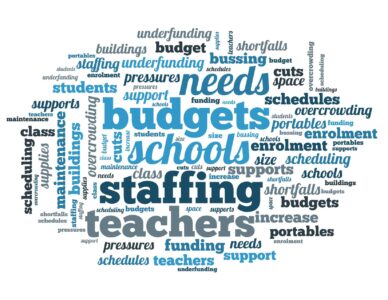

 It’s time to let parties and candidates know what you want to see if they want your vote, donation, or volunteer time. If they want to put a sign in your window or on your lawn, demand to know what they’re committing to for public education. I’ll be letting my candidates know that having among the lowest per-student funding in Canada doesn’t cut it. I want to know when they’re going to complete all outstanding school seismic upgrades.
It’s time to let parties and candidates know what you want to see if they want your vote, donation, or volunteer time. If they want to put a sign in your window or on your lawn, demand to know what they’re committing to for public education. I’ll be letting my candidates know that having among the lowest per-student funding in Canada doesn’t cut it. I want to know when they’re going to complete all outstanding school seismic upgrades. school land deemed ‘surplus.’ The BC Liberals closed 267 schools during their tenure, and K-12 funding fell to all-time lows. They also created a program (that still exists) to sell property deemed ‘surplus.’
school land deemed ‘surplus.’ The BC Liberals closed 267 schools during their tenure, and K-12 funding fell to all-time lows. They also created a program (that still exists) to sell property deemed ‘surplus.’ The trouble of course is that much of this land isn’t really surplus and is almost always needed in the future. With the ever-upward march of land values, school properties that are sold are gone forever- unattainable and unaffordable when needed back. Where land values are highest, the pressure to sell land is greatest, and the public has the greatest amount to lose in this folly. In Vancouver, the site of the current Wall centre, worth likely hundreds of millions, was formerly the site of a school.
The trouble of course is that much of this land isn’t really surplus and is almost always needed in the future. With the ever-upward march of land values, school properties that are sold are gone forever- unattainable and unaffordable when needed back. Where land values are highest, the pressure to sell land is greatest, and the public has the greatest amount to lose in this folly. In Vancouver, the site of the current Wall centre, worth likely hundreds of millions, was formerly the site of a school.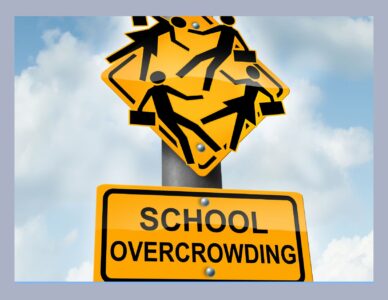 In Surrey district, where the population of school-aged children is exploding, the lack of land set aside for new schools is felt keenly as the district packs more and more students into existing schools – many in portable buildings. In Vancouver, where land values are high, schools are in poor repair and some buildings have excess capacity, largely created by the lack of family housing stock in the city, something likely to change in the future as the calls for increased density come from all political camps. North Vancouver district closed and sold many elementary schools during the last twenty years and parents in the district are now desperate for spaces as the density of school-aged children increases past capacity and projections.
In Surrey district, where the population of school-aged children is exploding, the lack of land set aside for new schools is felt keenly as the district packs more and more students into existing schools – many in portable buildings. In Vancouver, where land values are high, schools are in poor repair and some buildings have excess capacity, largely created by the lack of family housing stock in the city, something likely to change in the future as the calls for increased density come from all political camps. North Vancouver district closed and sold many elementary schools during the last twenty years and parents in the district are now desperate for spaces as the density of school-aged children increases past capacity and projections.
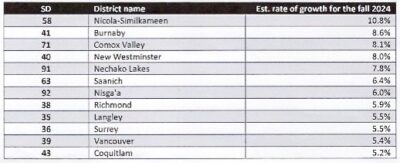
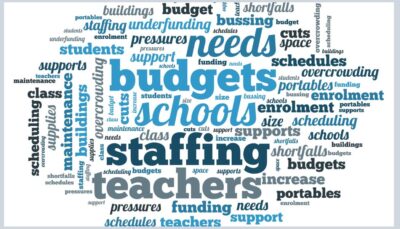
 that provincial law meant that fees could not be charged. The court case was successful in 2006.
that provincial law meant that fees could not be charged. The court case was successful in 2006. “shall consult with appropriate teachers, staff, staff committee, students and the Parents’ Advisory Council prior to establish the fee.” Do you recall that consultation last school year?
“shall consult with appropriate teachers, staff, staff committee, students and the Parents’ Advisory Council prior to establish the fee.” Do you recall that consultation last school year? financial hardship and how the waiver can be obtained. The policy is supposed to be fair, consistent and confidential. You can find how your district provides this in the district policy or ask the school principal.
financial hardship and how the waiver can be obtained. The policy is supposed to be fair, consistent and confidential. You can find how your district provides this in the district policy or ask the school principal.